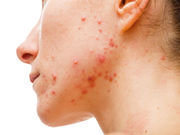Cost of repeat courses of isotretinoin with traditional dose outweighs increased medication costs
MONDAY, Jan. 11, 2016 (HealthDay News) — Traditional-dose isotretinoin therapy is associated with higher overall costs than high-dose therapy, according to a letter to the editor published in the January issue of the Journal of the American Academy of Dermatology.
Alexandra E. Zeitany, from the University of North Carolina School of Medicine at Chapel Hill, and colleagues examined the overall cost of high-dose versus traditional-dose isotretinoin therapy. They examined two hypothetical study groups: high-dose (cumulative >230 mg/kg) and traditional-dose (cumulative, 120 to 150 mg/kg). The costs were calculated for a hypothetical population of 100 patients, 50 males and 50 females.
The researchers found that, compared with the traditional-dose population, the high-dose population required an additional month of therapy. Based on prospective studies, acne relapse rates were 47.4 and 26.9 percent for traditional-dose and high-dose therapy, respectively. In retrospective studies, the retrial rates were 8 and 37 percent, respectively, for high dosing and traditional dosing. The costs of patient retrial (repeat courses of isotretinoin) outweighed the increased medication costs, accounting for 88 to 97 percent of total costs. With the difference in retrial rates, the overall cost of traditional therapy was more than double that of high-dose therapy.
“This analysis is useful as a basis for future pharmacoeconomic studies, in that it underscores the financial burden of isotretinoin therapy and highlights the importance of considering long-term, overall societal costs and not merely upfront costs when selecting dose regimens,” the authors write.
Copyright © 2016 HealthDay. All rights reserved.








